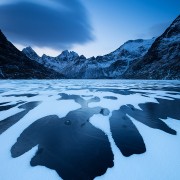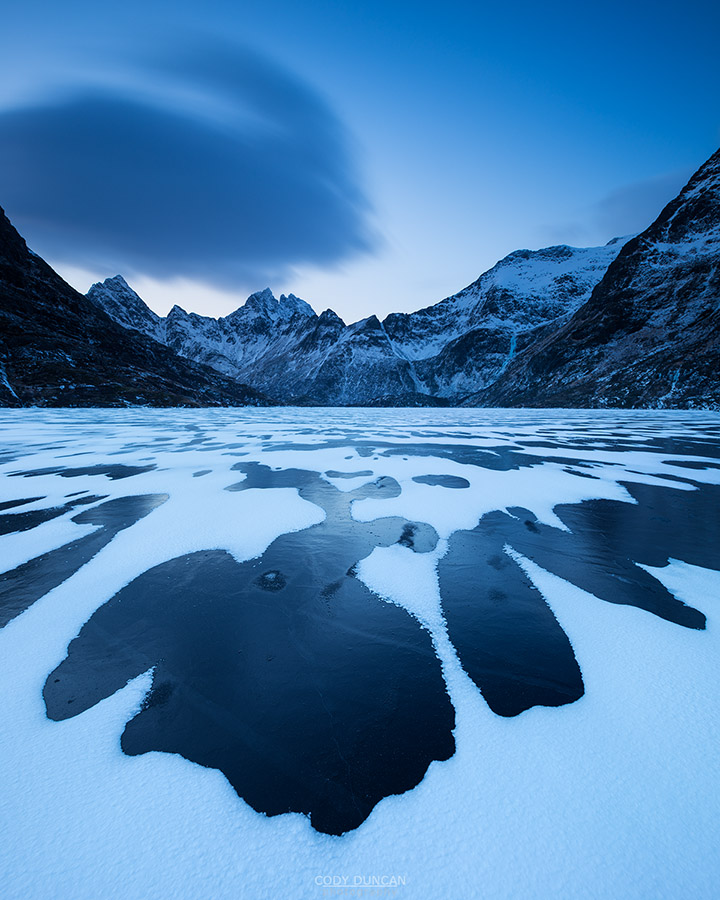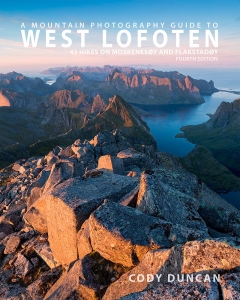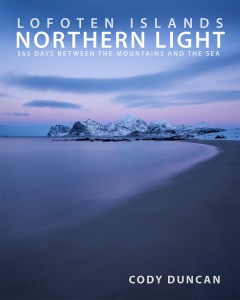Friday Photo #66 – Lake Agvatnet Winter
Photo: Patterns of snow on lake Ågvatnet, Å I Lofoten, Moskenesøy, Lofoten Islands, Norway. February 2, 2014. 15:27
I had been following the on Lofoten for the months before my travels at the beginning of February and knew the islands where having a ‘dry’ winter. This first was evident as I walked the cold, windy streets of Bodø from the airport to a friends house. Usually it is a perilous and slippery journey along icy sidewalks and streets, yet now I found only blowing circles of dust on the midnight roads.
So it was a surprise for me when I woke up expecting to see the first glow of dawn on the horizon, only to find my car enveloped by swirling snow and the world beyond the reach of my headlamp a deep black. I drove the winter roads, parked at some beach and waited in darkness until the storm began to pass and black turned to grey before turning to deep blue.
As afternoon arrived I made my way to the end of the road at Å, Normally a good location for winter sunsets. Waiting for the light to improve I hesitantly wandered out onto the frozen lake Ågvatnet. A few locals were out and about on their afternoon walks, so I figured it should be fine, and the ice was quite thick. Still, it makes some interesting noises while you stand out there.
The morning’s snow had blown into some interesting looking patterns, giving a nice contrast to the nearly black ice of the lake. And in somewhat flat, fading light of late afternoon in February, I searched for some interesting elements.
As much as I like this image, I do feel it a bit imbalanced. I would have liked to go with a square crop, but that caused me to loose too much of the cloud in the sky, which I think is important to the image. So I decided on a 4×4 crop, to give a little more space in the sky. But this leaves the image a bit centred I think, my eye not quite sure where to go first and not as drawn into the scene as I would like.
One of the difficulties of using multiple exposures with a tilt-shift lens to achieve square or panoramic images is that you never can see the overall composition as you are shooting. I do my best to estimate where the horizon will land one I combine the images and I often shoot a bit extra to give myself room to crop down, either from the top or bottom, but there are times like this where keeping the full image seems to work better.
Do you see an animal in the cloud?
Camera Info:
Nikon D800
Nikon 24mm f/3.5 tilt-shift
24mm
ISO 50
f 16
45 seconds
WB Daylight
3 images – top, middle, bottom
6 stop B+W neutral density filter







Leave a Reply
Want to join the discussion?Feel free to contribute!